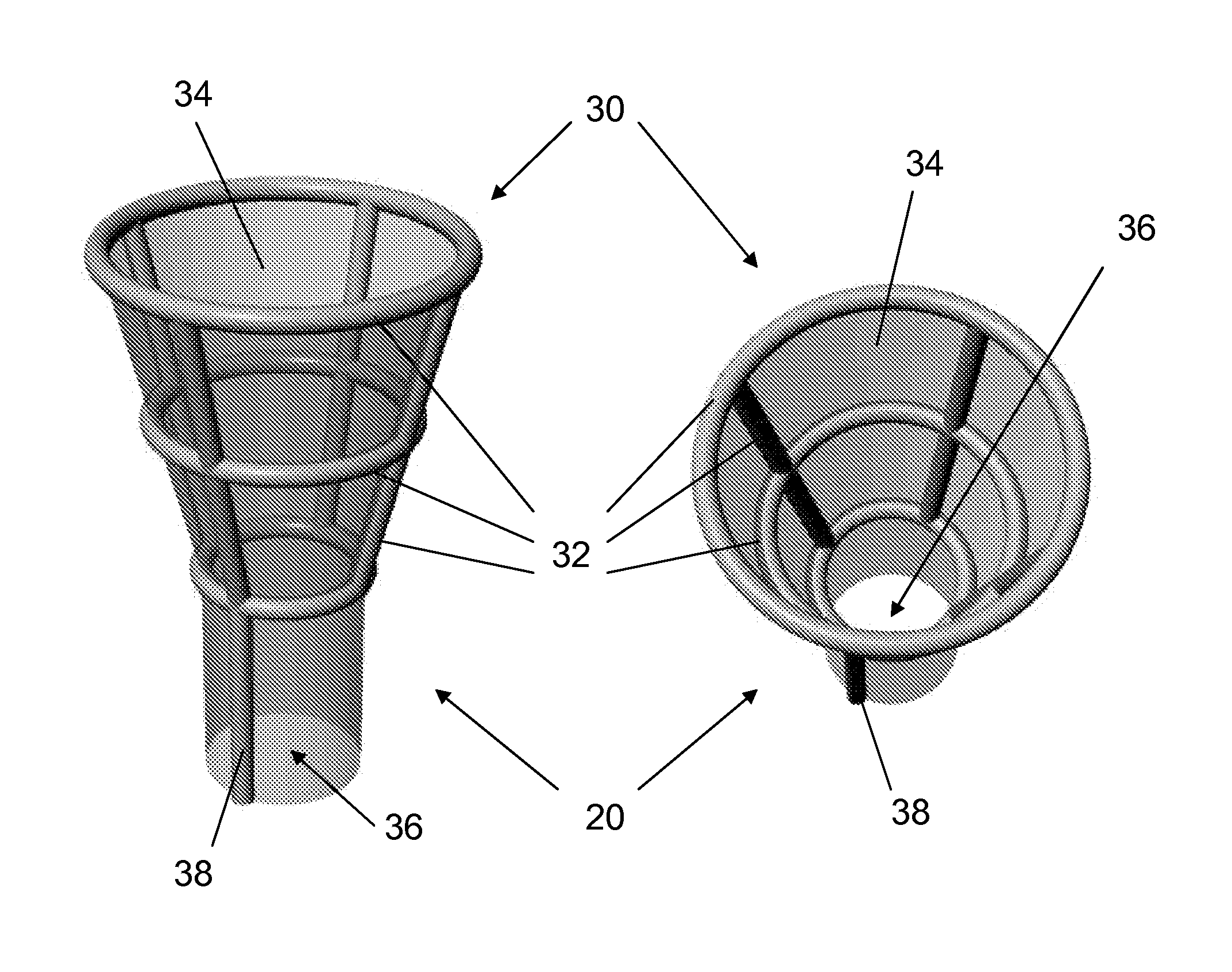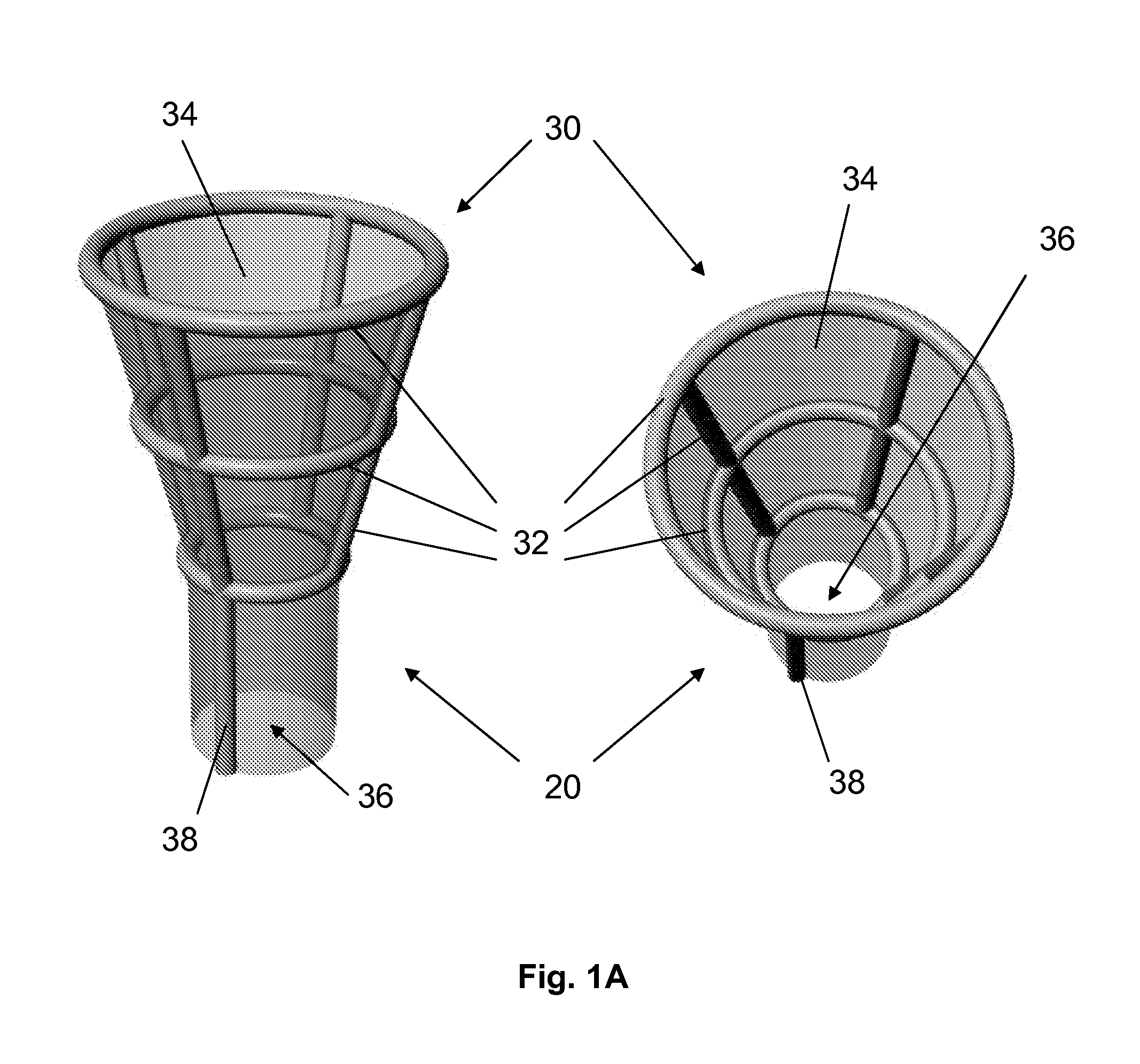Many of the most common and deadly diseases afflicting mankind result from or in the presence of undesirable material, most notably blood clots, in the blood vessels and
heart chambers.
Present treatment for such conditions with drugs or other interventions is not sufficiently effective.
Obstructing a systemic
artery interferes with the delivery of
oxygen-rich blood to organs and tissues (arterial
ischemia) and can ultimately lead to tissue death or
infarction.
Obstructing a systemic
vein interferes with the drainage of
oxygen-poor blood and fluid from organs and tissues (venous congestion) resulting in swelling (
edema) and can occasionally lead to tissue
infarction.
Obstruction of the arteries to abdominal organs by
thrombosis or thromboemboli can result in catastrophic organ injury, most commonly
infarction of the small and
large intestine.
Obstruction of the arteries to the extremities by
thrombosis or thromboemboli can result in
gangrene.
In the systemic venous circulation, undesirable material can also cause serious harm.
In the pulmonary circulation, the undesirable material can cause harm by obstructing pulmonary arteries, a condition known as
pulmonary embolism.
If the obstruction is upstream, in the main or large
branch pulmonary arteries, it can severely compromise
total blood flow within the lungs and therefore the entire body, resulting in low
blood pressure and shock.
If the obstruction is further downstream, it can
cut off the
blood flow to a smaller portion of the
lung, resulting in death of
lung tissue or pulmonary infarction.
The presence of the undesirable material within the
heart chambers can cause harm by obstructing flow or by serving as a reservoir for emboli to other organs in the body.
Patients with prosthetic valves, especially mechanical valves, are particularly prone to valve thrombosis and obstruction.
Thrombolytic agents can also be delivered through a
catheter directly to the blood clot which can increase its effectiveness by increasing local concentrations but this does not completely eliminate the absorption into
systemic circulation throughout the body.
First, every
cell in the body is exposed to the agent which can lead to serious and often life threatening bleeding complications in remote areas such as the brain and
stomach.
Mechanical treatment, however, has played a limited role in the removal of blood clots found in larger blood vessels such as pulmonary arteries and heart chambers.
This operation has been performed for nearly 100 years, but did not become practical until the introduction of the
heart lung machine.
Even then, it was generally relegated to a salvage procedure in moribund patients in whom all other options had been exhausted because of the inherent danger in the
surgery and the
recovery period.
Although these data have generated a renewed interest in performing surgical
pulmonary embolectomy, its use remains limited because of the invasiveness of the procedure.
Catheter-based removal of blood clots from larger blood vessels (e.g., pulmonary arteries) and heart chambers has had limited success, at least compared to smaller blood vessels (e.g.,
coronary arteries).
Catheter pulmonary embolectomy, where the pulmonary emboli are removed percutaneously using one of several techniques, has been around for nearly 30 years but few patients currently receive these therapies.
Their limited success is likely related to their inability to achieve a complete en-bloc removal of the material without fragmentation.
The experience with
catheter-based treatment of deep venous
thrombus has also had limited success.
This procedure is therefore time-consuming, inefficient and ultimately not very effective in removal of the whole clot.
It is clear that all of the therapeutic options available to patients with clot or other undesirable material in medium or large blood vessels, such as those with
pulmonary embolism, have serious limitations.
Anticoagulation only limits propagation of clot, but does not remove it.
Thrombolytic therapy is not targeted, carries a real risk of major bleeding, and is not very effective in firm / organized clots.
Catheter embolectomy uses technology developed for small blood vessels, does not scale well to material residing in medium and large vessels or heart chambers, and thus is not very effective.
Surgical embolectomy is highly effective but highly invasive.
Current efforts to apply
existing catheter embolectomy technologies to medium to large blood vessels and heart chambers encounter at least two obstacles: fragmentation and excessive
blood loss.
Techniques which depend on fragmentation of the material tend to be inefficient and ineffective in medium to large blood vessels and heart chambers because the flow of blood will carry a significant portion of the fragmented material away before it can be captured in the
catheter.
On the other hand, techniques which depend on aspiration of undesirable material will result in excessive
blood loss as the size of the catheter increases.
 Login to View More
Login to View More  Login to View More
Login to View More 


